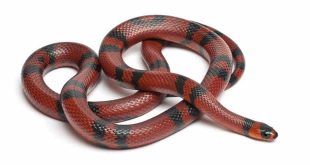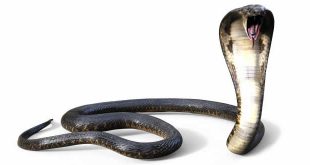 Pit Viper — The Crotalinae (Pit Viper) , or crotalines, are a subfamily of venomous vipers found in Asia and the Americas. They are distinguished by the presence of a heat-sensing pit organ located between the eye and the nostril on either side of the head. Currently, 18 genera and 151 species are recognized: 7 genera and 54 species in the Old World, against a greater diversity of 11 genera and 97 species in the New World. These are also the only viperids found in the Americas.
Pit Viper — The Crotalinae (Pit Viper) , or crotalines, are a subfamily of venomous vipers found in Asia and the Americas. They are distinguished by the presence of a heat-sensing pit organ located between the eye and the nostril on either side of the head. Currently, 18 genera and 151 species are recognized: 7 genera and 54 species in the Old World, against a greater diversity of 11 genera and 97 species in the New World. These are also the only viperids found in the Americas.
These snakes range in size from the diminutive hump-nosed viper, Hypnale hypnale, that grows to an average only 30-45 cm, to the bushmaster, Lachesis muta; a species that is known to reach a maximum of 3.65 m in length — the longest viperid in the world.
What makes this group unique is that they all share a common characteristic: a deep pit, or fossa, in the loreal area between the eye and the nostril on either side of the head. These pits are sensitive to infrared radiation, in effect giving the snakes a sixth sense that helps them to find and perhaps even judge the size of the small warm-blooded prey on which they feed.
The pit organ is complex in structure and is similar to, but much more highly evolved than the thermoreceptive labial pits found in boas and pythons. It is deep and located in a maxillary cavity. The membrane is like an eardrum that divides the pit into two sections of unequal size, with the larger of the two facing forwards and exposed to the environment. The two sections are connected via a narrow tube, or duct, that can be opened or closed by a group of surrounding muscles. By controlling this tube the snake can balance the air pressure on either side of the membrane. The membrane has many nerve endings packed with mitochondria. Succinic dehydrogenase, lactic dehydrogenase, adenosine triphosphate, monoamine oxidase, generalized esterases and acetylcholine esterase have also been found in it. When prey comes into range, infrared radiation falling onto the membrane allows the snake to determine its direction. Having one of these organs on either side of the head produces a stereo effect that indicates distance as well as direction. Experiments have shown that, when deprived of their senses of sight and smell, these snakes can strike accurately at moving objects that are less than 0.2°C warmer than the background. It would seem as though the pit organs work like a primitive pair of eyes, although it is not known whether the snake experiences this sense as a visual image or in some other fashion. Regardless, it is clear that these organs are of great value to a predator that hunts at night.
Among vipers, these snakes are also unique in that they have a specialized muscle, called the muscularis pterigoidius glandulae, between the venom gland the head of the ectopterygoid. Contraction of this muscle, together with that of the m. compressor glandulae, forces venom out of the gland.
 Kids Portal For Parents India Kids Network
Kids Portal For Parents India Kids Network


